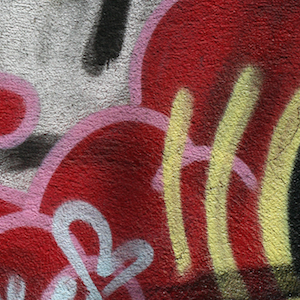Ready, set, go
Get Started
Have you always wanted to run a design challenge?
Whether you're an educator, a designer, an entrepreneur, or a curious, creative learner of any stripe, you're welcome to use the resources we've put together to run a design challenge.
The resources here offer a scaffolded approach to applying design thinking to a challenge area. They were curated from a wide range of sources to allow anyone a chance to experiment with design thinking and social entrepreneurship practices.
For this project, we chose manufacturing as a challenge area where we applied the methods and mindsets of design thinking and business modeling to design solutions. If this challenge doesn't work for your context, you can substitute challenges that support your local needs.
The harder you fight to hold onto specific assumptions, the more likely there’s gold in letting go of them.John Seely Brown
This design challenge has seven phases.
- Empathize: Conduct interviews and share your findings.
- Synthesize: Organize your interview findings into a Point Of View statement, and share it in a video.
- Ideate: Brainstorm possible solutions, and share a sketch.
- Prototype: Build and test your solution, and post your results.
- Business model: Create and share a business model canvas.
- Pitch: Create and share a pitch.
- Reflect: Create a portfolio on Pathbrite that summarizes what you’ve learned.
Team up, or fly solo?
You can do the challenge alone, but we recommend finding a group of friends or colleagues. You'll feel more motivated, get more done, and have more fun.
Can you help me get this challenge started?
Though this challenge is over, you can always email your questions, concerns, and comments to team@futureofstuffchallenge.org. We will do our best to write back to you with our thoughts.
Design thinking is a human centered process and we believe that the best innovations arise out of a thoughtful response to stimuli that designers are exposed to in the world. The focus is on making people the source of inspiration and direction for solving design challenges.
Empathize
Empathizing is the first phase of the design thinking process. During this phase, you will immerse yourself in learning, talk to experts and conduct research. You will watch how people behave and interact. You will look at physical spaces and places with fresh eyes, talk to people about what they are doing, ask questions and reflect on what you see.
The goal of this phase is to develop background knowledge about specific users through these experiences. You will use your developing understandings as a springboard for the rest of the process.
Synthesize
Once you have all of your data, you will organize it, analyze it and identify patterns and themes. This process will help you to develop deep insights about your user, from which you will craft statements about what your user needs.
Ideate
In the ideate phase, you will be challenged to brainstorm a myriad of ideas to meet the need you defined in the synthesis phase. Quantity is encouraged during this part of the process. At the conclusion of this phase, you will choose 1 idea to build in the prototyping phase.
Prototype
Prototyping is where you build to think and build to learn. A prototype can be a sketch, model, or a cardboard box and it is a way to convey your ideas quickly for feedback. The idea of this phase is to fail early and often as you create and test your prototypes. Once your prototype is built, you will test it to learn what works and what doesn’t, and then iterate. This means going back to your prototype and modifying it based on user feedback. Testing ensures that you learn what works and what doesn’t work for your users as quickly and efficiently as possible.
Business Modeling
In this phase of the process, you will convert your prototype into a minimum viable product and investigate ways to bring your idea to market. You will learn about the “build, measure, learn” learning loop as well as some concrete strategies for scaling and spreading your ideas into a viable business model.
Creativity is magical, but is not magic.Charles Limb
Design Methods Toolkits
We'll be using excerpts from these two design toolkits throughout the process – here they are in full.
More Resources
You are an entrepreneur. That’s right, YOU.
Your job is to embody the entrepreneurial spirit. Make something so compelling that you are willing to sleep on couches and beg your friends and family for funds to make it happen. Entrepreneurship is a massive field of inquiry and activity and we will just scratch the surface here.
Creating something out of thin air is easy. It’s finding the air that’s hard.Asher Trotter
Your project
A successful experience in this challenge will result in at least two possibilities. In one, you design a product or service solution that presents such a compelling opportunity that you push forward with it as a startup venture – seeking out funding or the support of a business incubator, or "bootstrapping" it independently.
Your new capacities
If startup entrepreneurship isn’t your thing, you’re still able to capitalize on the skills and competencies you develop in this course. Your final product prototype, as well as every asset you create along the way, speaks volumes about what you have to contribute to a school, a workplace, and the world. The high-level skills you will gain are those that people like Thomas Friedman of the New York Times (here, and here) and the consulting firm McKinsey indicate are in highest demand among employers and vitally important to a sustainable future.
Sharing your skills with a portfolio
Use a portfolio to collect all your assets in one place as evidence of your skills. We’ve set up a way for you to organize your work according to the skills you’ve developed here.
For this challenge, we introduced an online portfolio tool: Pathbrite. This SF-based startup is a tool that lets you organize, describe, and share what you do and what you learn during the challenge. Our Breaker-specific portfolio is no longer available, but anybody can create an individual portfolio on Pathbrite to try it out.




